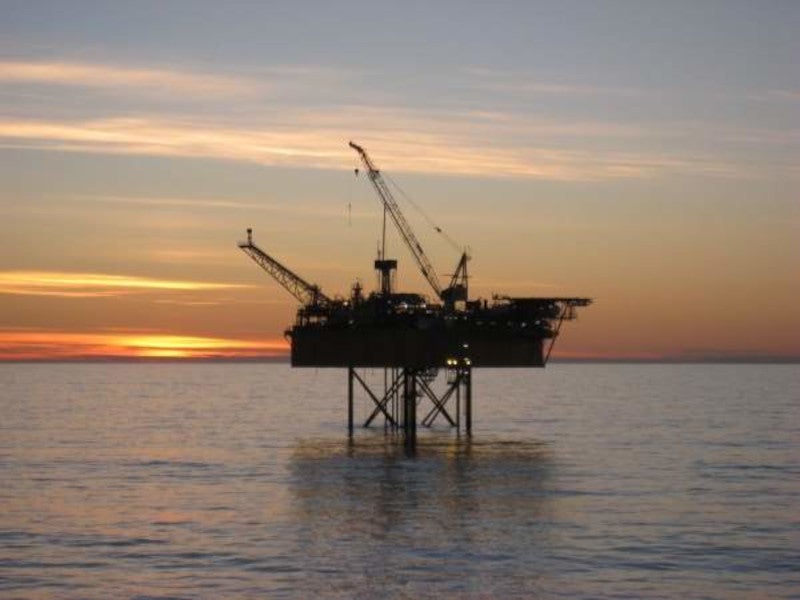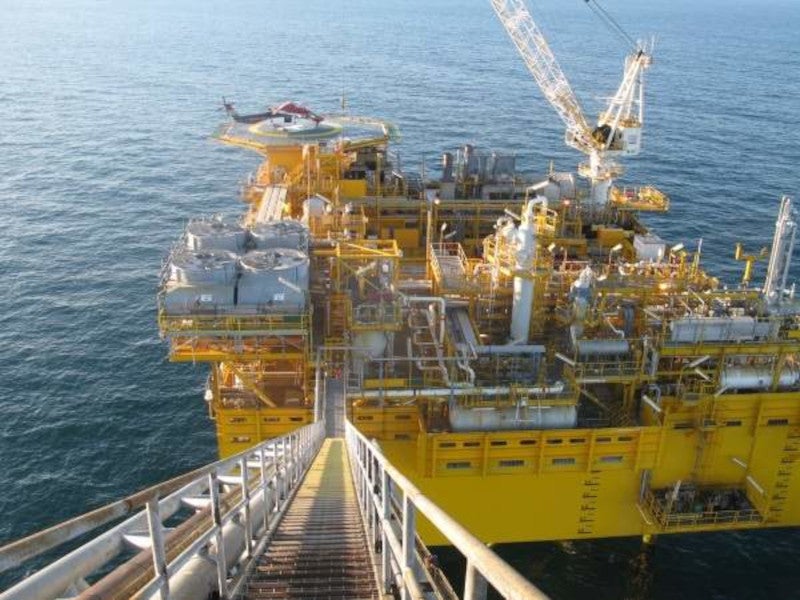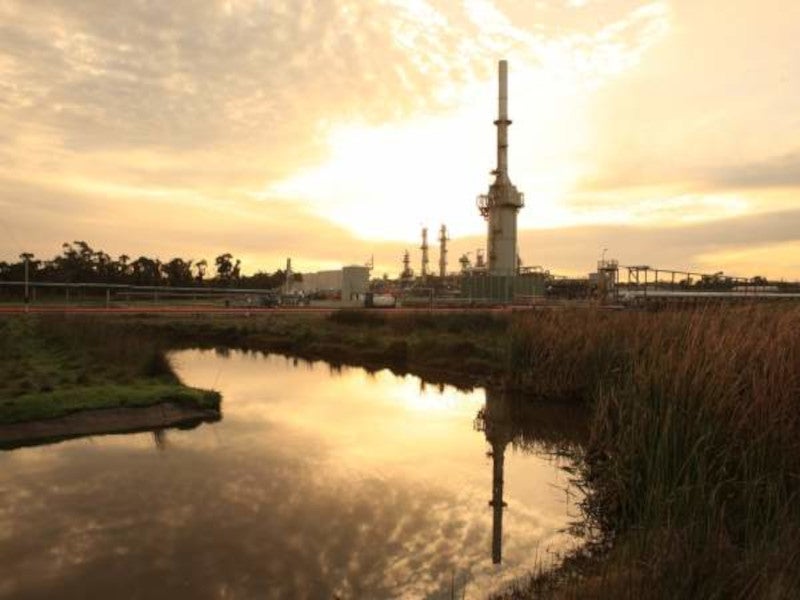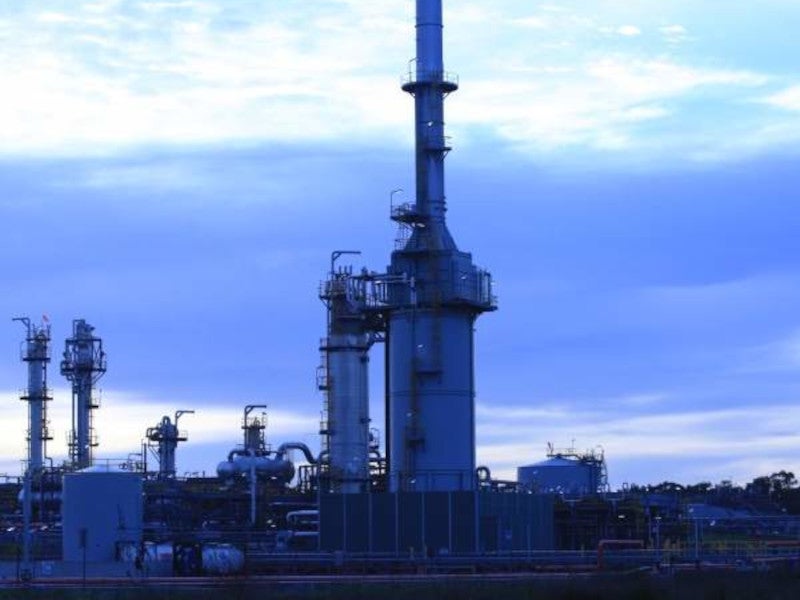The BassGas project, comprising the onshore BassGas Plant (Lang Lang processing plant) and offshore Yolla gas field, produces gas from the Yolla field in the Bass Basin in production licence T/RL1 of the Bass Strait, offshore Australia.
The field lies in a water depth of 80m, approximately 147km offshore of southern Victoria.
The project is operated by Beach Energy, which holds 88.75% interest in the field. The joint venture partner Prize Petroleum, which is a wholly owned subsidiary of Hindustan Petroleum (HPCL), holds the remaining 11.25% interest in the field.
First gas from the project was produced in June 2006.
Yolla field discovery
The Yolla field was discovered by the Yolla-1 well in 1985. The discovery well was drilled by the Glomar Robert F Bauer semi-submersible drilling rig. It encountered a 30m gas column in five reservoir zones. During flow tests, the well flowed at the rate of 15 million cubic feet of gas per day.
Geology of the Bass Strait area
The field reservoir consists of sandstones of the Eastern View Coal Measures and Intra-Eastern View Coal Measures of the Early Paleocene to Early Eocene age. Hydrocarbon accumulations in the sandstones are sealed by deep and laterally continuous intraformational shales.
Reserves of Yolla field
The Yolla field was estimated to contain proven and probable reserves of 333 petajoules (PJ) of gas or 28 million barrels of condensate and LPG liquids.
Appraisals, exploration drilling and field development
A 3D seismic survey over the field was acquired to estimate the reserve potential and identify drilling targets in 1994. Based on the survey, the Yolla-2 well was drilled in 1998 to appraise the gas column discovered by Yolla-1.
The federal government approved the project in December 2002. The field development plan included the installation of the Yolla A unmanned offshore platform and a pipeline to export the hydrocarbons onshore. It also included the construction of an onshore processing facility at Lang Lang, 70km south of Melbourne, Victoria.
In September 2004, previous operator Origin Energy completed the drilling of two production wells, Yolla-3 and Yolla-4. The field was originally scheduled to come on stream in 2004. The commissioning was, however, delayed due to non-compliance by main contractor Clough with some of the contractual agreements.
In 2009, the mid-life enhancement (MLE) project was approved to meet the increasing demand for gas in south-east Australia. The project extended the life of the BassGas Project and was implemented in two phases.
The first phase was launched in 2011 and included the installation of an accommodation module on the Yolla platform to convert the platform into a manned facility. The $A26.6m ($27m) module weighs 650t and is 19m high, 33m long and 13m wide. It features bunkrooms, kitchens and offices, as well as power and water utilities. The platform arrived at Port Taranaki in November 2011. Safety-related facilities, compression facilities and other equipment were also installed on the platform.
The first phase was completed in 2012 at an estimated cost of A$580m.
The second phase of the MLE project included the drilling of two additional production wells – Yolla-5 and Yolla-6 in 2015. Production from the wells began in August of that year.
Yolla platform details
The Yolla A offshore platform weighs 8,000t and is 120m high. Built in Singapore, the platform was towed to the field and installed in 80m of water. The unmanned structure was built at a cost of $210m, which was remotely monitored from the Lang Lang processing plant.
The platform includes facilities to tie in additional production wells from the Yolla field, as well as other fields in the area.
Yolla field expansion details
Beach Energy is currently extracting natural gas from the Yolla offshore platform via three wells and plans to expand the Yolla gas field to meet Australia’s increasing natural gas demand. The expansion involves the drilling of the Yolla West infield well, within the existing field, using a jack-up mobile offshore drilling unit (MODU), with drilling set to commence in 2024.
The expansion is expected to restore the Lang Lang gas plant to its full production capacity of 67TJ/day and prolong the Yolla field’s life.
Furthermore, Beach has completed the Prion 3D seismic survey around the Trefoil field and adjacent retention leases in which it holds a 90.25% interest alongside Prize Petroleum. Trefoil, situated 38km east of the Yolla Platform, could be developed through the Yolla Platform, potentially extending its operational life by around ten years, enhancing recovery from Yolla, and postponing the decommissioning of both the Yolla platform and Lang Lang gas plant.
The proposed development for Trefoil includes two subsea wells and a 37km pipeline tie-back to the Yolla platform.
However, Beach has opted to prioritise the Yolla West project over Trefoil, as the former offers a lower-cost, more immediate, and higher-return investment opportunity.
Gas and liquid transportation at the Lang Lang facility
Gas and liquids produced at the Yolla platform are transported to the Lang Lang facility via an approximately 180km pipeline, consisting of a 147.5km offshore section with a 14in diameter and a 32km onshore section, along with smaller associated pipelines. The pipeline reaches land near Kilcunda beach.
The Lang Lang facility, with a processing capacity of 75 million standard cubic feet per day, is equipped with a fluids receiver, gas sweetener and dehydrator, an LPG recovery unit, a fractionator, a condensate stabiliser, and storage facilities.
Additional utilities include power generation, flare systems, and heating facilities. The facility processes hydrocarbons from the field, separating gas from LPG and condensate. The gas is sent to the Victorian Principal Gas Transmission Pipeline while LPG and condensate are transported by road in tankers for sale.
Contractors involved
Clough was awarded the engineering, procurement and construction (EPC) contract for the project. The company was responsible for detailed design and construction of the platform, pipeline and onshore processing plant.
Clough subcontracted Arup Energy for the substructure design of the platform. Uhde was selected by Clough as the main EPC subcontractor for the Lang Lang processing plant.
Dresser-Rand supplied its KG2-3E gas turbine generator packages for the Yolla platform.
Cummins Power Generation supplied five gas generator sets for installation at the Lang Lang processing facility.
ABB was awarded contracts worth $2.5m to supply gas chromatographs and gas sampling systems for the processing facility. The contract also included supply of voltage intelligent motor control centres for the Yolla platform.
Downer Group provided mechanical and electrical services for the onshore processing plant.
BGB Electrical carried out pre-commissioning works for the Lang Lang facility.
Coe Drilling Australia won the contract to install a shore crossing for the onshore section of the pipeline.
CADS Survey was the main surveyor for a section of the pipeline.
Fitzroy Engineering won a $35m contract to build the accommodation module for the Yolla platform.
Safehouse Habitats designed and built a secure and safe working area for personnel on the Yolla A platform.
Wood, a consulting and engineering company, was awarded two front-end engineering and design (FEED) contracts to assist Beach Energy with the development of the Trefoil field in the Bass Basin in 2021.






